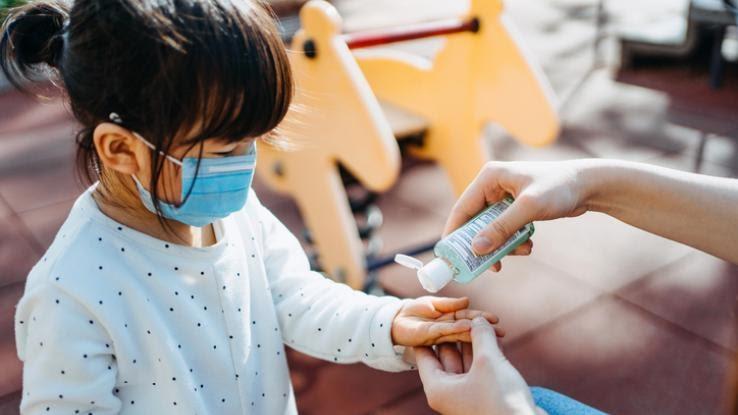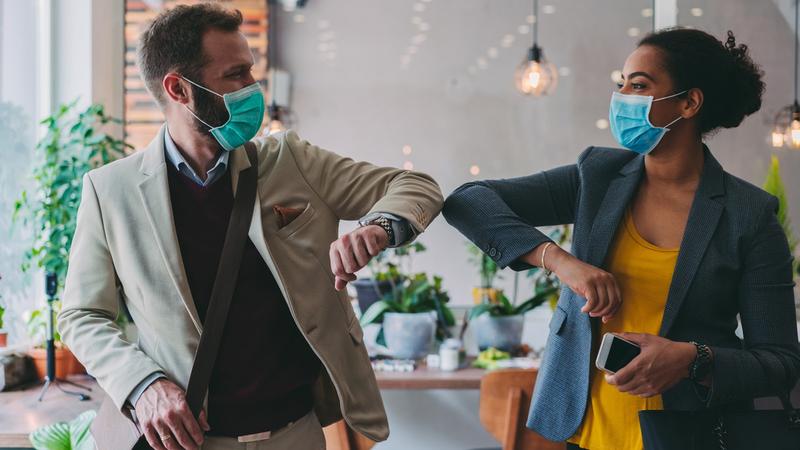What Is Asymptomatic Transmission?

After the unprecedented events of 2020, most people have more familiarity with medical terminology than they ever had before. That means you’ve probably heard the term “asymptomatic transmission” used at some point, but do you actually know what it means? If you aren’t really sure you understand the meaning, you aren’t alone.
We put together this crash course to explain — in layman’s terms — what it means for a patient to be asymptomatic and why it’s important to remember that even asymptomatic patients can be contagious. Ready to learn more about the measures doctors advise us to take to stay safe during an outbreak? Let’s take a look!
Understand the Meaning of Asymptomatic
The literal meaning of asymptomatic is “no symptoms,” which isn’t the same thing as “no illness.” It simply means a patient isn’t showing any obvious signs or symptoms of a particular disease or illness, even when they are infected with it.

The term asymptomatic is often confused with pre-symptomatic, which simply describes a patient with an illness who hasn’t exhibited normal symptoms — yet. In most cases, patients with no symptoms are merely pre-symptomatic and will eventually develop symptoms as expected, but asymptomatic patients never develop symptoms of the illness at all.
It’s important to remember that the absence of symptoms doesn’t always mean a patient isn’t contagious or carrying a virus, bacteria, fungus, parasite or other disease-causing agent. Not only can asymptomatic patients be infected, but they can also spread the infection to others if it’s a contagious strain.
As a result, being asymptomatic when infected with a disease can seem like a blessing, but it can also cause a lot of problems for those around you. Asymptomatic patients may never realize they have an illness and are contagious, causing them to inadvertently spread the disease to others who are susceptible.
It could also lead to future problems with the asymptomatic person’s health if the disease is never treated and damage goes undetected because of the lack of symptoms. Common asymptomatic diseases include hypertension, osteoporosis, Type 2 diabetes, certain forms of cancer and various sexually transmitted diseases. Many health professionals believe large numbers of asymptomatic cases of COVID-19 have contributed to the difficulty we’ve had controlling the spread of the virus in the U.S.
One study found that even diseases as serious as the Ebola virus can go undetected in an alarming number of infected patients. “For Ebola virus, 27–71% of all infections are estimated to be asymptomatic,” the study discovered. This, of course, leads to the dangerous problem of asymptomatic transmission.
What Is Asymptomatic Transmission?
Armed with the previous info, it’s a little easier to decipher the meaning of asymptomatic transmission. It simply describes what happens when an asymptomatic person who is contagious unknowingly transmits the disease to numerous other people they encounter. The risk of asymptomatic transmission is what prompts many people to undergo regular screenings for diseases, even if they don’t feel sick. Testing also recently proved to be an essential tool for maintaining public safety during a pandemic, especially for essential workers and those most at risk of infection.

Asymptomatic transmission also helps explain why health officials urge social distancing as a means of protection against respiratory viruses like COVID-19. As Dr. Nipunie Rajapakse of the Mayo Clinic explained, “Based on what we know about [the COVID-19] outbreak so far, as well as information about how other respiratory viruses are transmitted, the primary route of transmission for this is thought to be respiratory droplets.”
“Respiratory droplets are usually transmitted when someone coughs or sneezes, and someone else either inhales it or touches something that the virus particle has landed on and then touches their own eyes, nose or mouth.” Dr. Rajapakse said. “Generally, a respiratory droplet can transmit about 3 to 6 feet from the person who has coughed or sneezed.”
As Dr. Rajapakse noted, this process explains how a wide variety of respiratory viruses are spread, not just COVID-19. Other types of viruses include those that cause the flu, pneumonia, bronchiolitis and the common cold.
Learn How to Protect Yourself
The idea that anyone could unknowingly be a carrier of an illness at any time has never been reassuring, particularly during flu season or throughout the course of a global pandemic. Understanding the threat of asymptomatic transmission is an important first step in protecting yourself.

Dr. Rajapakse offers some advice: “No. 1 is to wash your hands. The second thing is to practice what we call respiratory etiquette. That means coughing or sneezing into your elbow or into a tissue and then washing your hands very well afterward. We know viral particles that end up on your fingers and hands can be transmitted to other people, so that’s one way to protect yourself and your family.”
It’s also important to be aware that you could be the one who turns out to be an asymptomatic carrier. If that’s the case, you could be infected and transmit the virus you’re carrying to others, and they could develop severe symptoms. That’s one key reason wearing a mask in public is so important during a pandemic. It lowers your risk of contracting a contagious illness, but even more importantly, it protects others from potentially contracting it from you. Masks stop the flow of small respiratory droplets that naturally escape from your mouth while you speak.
Social distancing is also an important part of staying safe, particularly when it comes to avoiding large gatherings in small spaces, such as indoor parties and airplanes. One study revealed that even though some passengers had acceptable temperature checks, they still posed a large risk to others on their flights due to asymptomatic transmission.
Check Out Additional Resources
If you’ve come in contact with someone who has been diagnosed with a contagious virus or illness — COVID-19 or otherwise — it’s important to get tested whether you’re showing symptoms or not. If you don’t have health insurance to help cover the cost or you can’t afford coverage, visit Healthcare.gov to see if you qualify for Medicaid or the Children’s Health Insurance Program. The site also provides information to help you apply for health coverage under the Affordable Care Act.

Sources:
https://www.gundersenhealth.org/covid19/the-asymptomatic-and-pre-symptomatic-spread-of-covid-19/
https://www.advisory.com/daily-briefing/2020/08/13/asymptomatic
https://www.ncbi.nlm.nih.gov/pmc/articles/PMC5830799/
https://www.youtube.com/watch?v=h-g_-mlgeak&feature=youtu.be
https://wwwnc.cdc.gov/eid/article/26/11/20-3353_article 1
https://www.cdc.gov/coronavirus/2019-ncov/hcp/faq.html#Transmission
https://www.healthcare.gov/medicaid-chip/getting-medicaid-chip/





